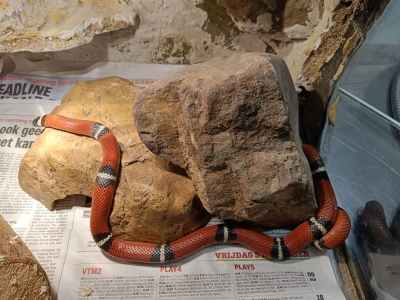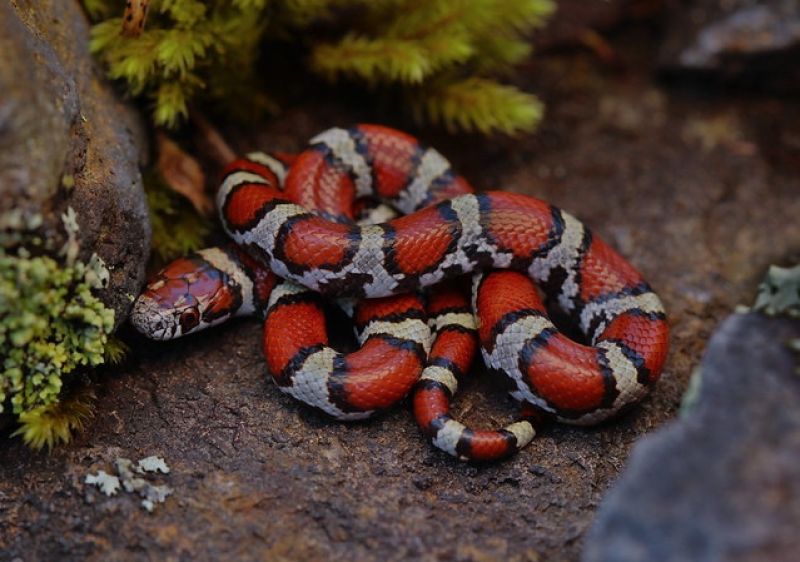Milk snake Lampropeltis triangulum
Animals in our sanctuary
Nestor

Nestor was kept by a private individual. As the care became too heavy for the person himself, he started to look for a good home for his animal. And so Nestor found his home at De Zonnegloed.
Where do I feel at home
The milk snake prefers to dwell in wooded areas in eastern America and a small part of Canada. But you can also find them elsewhere such as swampy places, dunes, the prairie and agricultural land. During winter, they also migrate to higher and drier places. There they then hibernate from November to April.
What do I prefer to eat
A young milk snake will mainly eat insects, worms and snails. As adults, they will include small mammals, birds, amphibians and reptiles (including other snakes) in their diet. They supplement this with eggs and all kinds of invertebrates. A true opportunist.
MORE INFO
Appearance
There are many subspecies of the milk snake, which can vary greatly in size and pattern. For example, the largest subspecies can grow up to 180 cm long and weigh 225 grams, but the smallest will only measurea bout 36 cm long and weigh 38 grams. However, they do usually have a banded pattern of red, black and yellow or white. But this can still vary greatly. One particular subspecies, for example, is almost completely black.
Trivia
Because of their banded pattern, they can closely resemble coral snakes, which are extremely venomous. A mnemonic often used, but not always correct, goes as follows: "Red touches black, it's a friend of Jack. Red touches yellow, it's bad for a fellow". They can also resemble other, venomous species, so they are often mistakenly killed.
The name milk snake stems from the superstition that the snake would drink the cow's milk. They are after all often found in the barns near cows.
Reproduction in the wild
The milk snake lays about 10 eggs, but this can go up to 24 in one clutch. They lay these cluthes in June and July. After two months, the tiny snakes hatch, weighing only 4 grams.
Threats
For the time being, the milk snake is not threatened, but due to the demand for the animal in pettrade, there is more and more wild catches happening which could change this.




